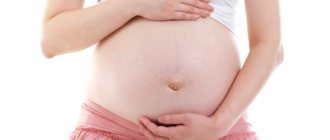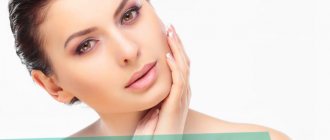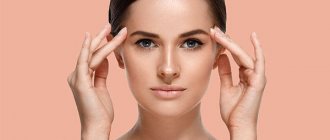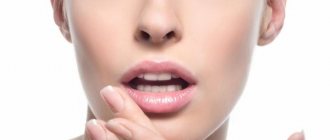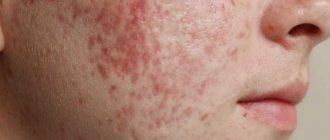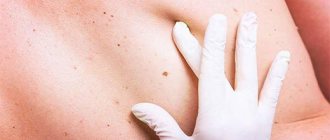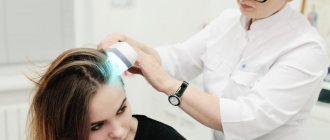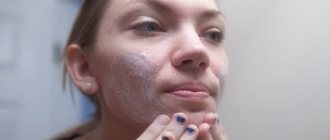The main criterion of beauty is clean, healthy skin. Unfortunately, not everyone is endowed with this dignity. Many people suffer from rashes that cause physical and mental discomfort. To gain self-confidence, the first thing you need to do is figure out how to get rid of acne.
What is acne and how does it appear?
Before looking for ways to get rid of acne, it is worth understanding the nature of this phenomenon. Acne is a chronic inflammatory disease. This is the result of blockage of the sebaceous glands. Sebum is vital for maintaining the normal functional state of the epidermis, protecting against microbes and the negative effects of the external environment. But when the sebaceous glands work too intensely, it becomes a problem called “comedones.”
Most often, teenagers and young adults face the problem of acne. This is due to hormonal fluctuations. In older age, the problem occurs less frequently and is usually associated with metabolic disorders. If you suffer from acne, do not despair, because, according to statistics, 50% of women and 25% of men experience acne.
Main causes of the problem
The way to get rid of acne largely depends on the cause of the problem. Here are the main ones:
- hormonal imbalances;
- disturbances in the functioning of the endocrine system;
- disruption of the nervous regulation of the functioning of the sebaceous glands;
- acute or chronic diseases of internal organs;
- increased sweating;
- bad ecology;
- bad habits;
- malnutrition;
- violation of personal hygiene rules.
Causes of itching
Why do acne itch? If the formation of acne is accompanied by severe itching, first you need to determine the cause of this problem. In some cases, itchy rashes appear as a result of an allergic reaction to some irritant, but the list of “provocateurs” of the unpleasant process is much longer.
Dermatologists identify several main reasons why acne causes severe discomfort:
- Irritation. In the presence of an inflammatory process in the dermis, severe itching often occurs, which appears as a result of the destruction of soft tissues;
- Demodex. Another reason why acne constantly itches is the demodex mite. Parasitizing in the upper layers of the skin, the mite “eats” the channels for movement, which provokes unpleasant sensations;
- Allergy. If, when an allergic reaction occurs, a person does not use antihistamines, the resulting rash causes itching in 80% of cases;
- Neurological problems. In some cases, acne itches due to instability of the psycho-emotional state. To solve the problem, doctors recommend using drugs with a sedative effect;
- Infection. Pathogenic flora, activating in the inner layers of the dermis, causes inflammation, which “makes” acne itch. A similar reaction often appears with the development of folliculitis, chickenpox, measles, etc.
Why does itching occur? Doctors also identify a number of factors that can trigger the appearance of an unpleasant symptom.
These include:
- dryness of the epidermis;
- overdose of medications;
- oncological diseases;
- abuse of decorative cosmetics;
- diabetes;
- hypovitaminosis and anemia;
- improper skin care.
If you experience pimples that itch, you should definitely seek help from a specialist. In 50% of cases, such a reaction occurs due to the development of parasites in the skin: demodex, scabies mites, lice, etc.
Types of acne
Why does acne occur? In most cases, small pimples appear due to disruptions in the functioning of the pilosebaceous apparatus, which causes inflammation in the follicles.
Dermatologists distinguish several main types of acne that form on the face and body, namely:
- Comedones. Such pimples appear as a result of blockage of the mouth of the bulb with natural fat and look like blackheads;
- Milia. Whiteheads appear due to hypersecretion of sebum, which does not have time to “evacuate” from the sebaceous ducts, forming large pimples;
- Rosacea. Red and inflamed acne occurs primarily on the face and back. The main reason for their appearance has not been established, but it is known that their formation can be triggered by clogged pores on the skin;
- Watery blisters. Appear due to the development of an allergic reaction or more serious infections: herpes, lichen, chickenpox, dermatitis, pemphigus, scabies, etc.;
- Common rash. Small red rashes that occur mainly on the face can occur against the background of intoxication of the body, increased oily skin and abuse of decorative cosmetics.
Specifics of acne treatment
We have already found out why acne itches, and now it remains to understand the methods of dealing with the dermatological problem.
The main methods for eliminating acne on the face and body include:
- Drug treatment - consists of taking medications that fight the causative agents of rashes on the face - fungi, viruses, parasites, etc.;
- Alternative treatment - external use of traditional medicine helps eliminate red acne on the face, but it is not able to completely cope with the pathogens that caused the problem;
- Hardware treatment - ozone therapy and laser irradiation helps eliminate not only acne on the face, but also scars after they have healed.
Types of medicinal ointments
Constant itching in most cases causes more discomfort than the acne on the face itself. Discomfortable sensations force you to scratch the already affected areas of the dermis, which entails a complication of the situation. Why? Mechanical damage to the skin increases the chances of the development of pathogens, in particular bacteria. As a result of their development, acne can become a chronic disease.
How to deal with acne that itches?
To eliminate dermatological problems on the face, doctors recommend using the following ointments:
- “Clindovit” is an antibacterial ointment that fights acne caused by the development of microbes;
- “Zinerit” is a broad-spectrum drug that eliminates ulcers of various etiologies;
- “Differin” - ointment normalizes metabolic processes in the skin, which prevents the appearance of plugs in the pores;
- “Curiosin” – helps eliminate red acne on the face caused by lipid metabolism disorders in the dermis;
- Ichthyol ointment - has a soothing, anti-inflammatory and anti-edematous effect.
Taking vitamins and minerals
How to get rid of acne? We need to act not only from the outside, but also from the inside. To fight acne and maintain healthy skin, you need the following vitamin and mineral complex:
Treatment for urticaria and prickly heat
You can treat prickly heat with the following medications:
- "Bepenten" ointment;
- formalin, solution;
- salicylic and boric acid;
- "Fukortsin";
- "Chlorophyllipt".
You can also cure prickly heat using traditional methods.
This requires the following components:
- celandine;
- calendula;
- chamomile;
- boiling water, 1l.
Instructions:
- You need to take 1 tbsp. l. herbal set and pour boiling water.
- Leave to stand for 30 minutes.
- Filter.
- Pour the broth into the bath and take it for 15 minutes.
Components:
- celandine, 1 tsp;
- hawthorn, 0.5 tsp;
- burdock, 0.5 tsp;
- horsetail, 0.5 tsp;
- mint, tip of tsp;
- water, 1 tbsp.
Instructions:
- The herbal mixture is mixed and poured with boiling water.
- Leave to stand for 4 hours.
- After a while it is filtered.
- The prepared raw material should be wiped over the affected area 3 times a day.
We invite you to familiarize yourself with Pulmicort for inhalation for children: how to dilute it with saline solution, analogues and reviews
Another great way to combat prickly heat is laundry soap. They need to lather the body and leave to dry for 15 minutes, then rinse.
It is recommended to treat urticaria with the following medications:
- “Isoptin”, “Finaptin” (for cold allergies);
- “Prednisolone”, “Cyclosporine”, “Loratadine”, “Cetirizine”, “Ebastine”, “Fexofenadine” (for acute and chronic forms);
- ointments and gels with atropine and belladonna extract (for cholinergic form);
- “Tavegil”, “Diazolin”, “Fenistil”, “Claritin”, “Zirtek”, “Diphenhydramine”, “Cetrin” (for solar form).
Recipe for treating urticaria.
- nettle, 1 tbsp. l.;
- water, 1 tbsp.
Preparation:
- Nettles need to be filled with boiled water.
- Leave to stand for 30 minutes.
- Filter.
- It is recommended to use 0.5 tbsp. up to 5 times during the day.
Components:
- table vinegar, 1 tsp;
- water, 1 tbsp. l.
Preparation:
- Vinegar must be mixed with water at room temperature.
- You need to soak a piece of cotton wool in this solution and apply it to the affected area.
Pharmacy products
How to get rid of acne for a teenager? Most likely, it is worth working on normalizing hormonal levels. And to minimize the negative impact on the skin, use these inexpensive pharmaceutical products:
Causes of acne on the chin in men
Since there are many sebaceous glands in the chin area, they often become clogged and cause inflammation on the skin. Constantly touching this area with your hands leads to infection and further rashes. If the ducts of the glands become clogged with various contaminants or their own secretions, a beneficial environment is created for the life of microbes.
Adolescence
It's no secret that the transition period for many is accompanied by a rash on the face. The cause of pimples on the chin in boys is hormonal imbalance and changes in the functioning of the sebaceous glands. It is the increased secretion of sebum in adolescents that leads to clogged pores and rashes.
Other diseases
In men and women, skin problems often arise against the background of a chronic process or pathology of internal organs. One of the most common causes is disruption of the digestive system, which immediately affects the condition of the skin. Diseases of the endocrine system, sexually transmitted infections, and pathologies of the genitourinary system also affect the condition of the skin and can manifest as pimples on the chin. Chronic processes lead to the spread of infection throughout the body and inflammatory and pustular formations on the body.
Poor nutrition
Acne and other skin diseases are caused by an unbalanced diet. If you don't get enough vitamins and minerals from your diet, it will be much harder for your body to cope with infection and other factors that cause acne. Skin health is affected by excessive consumption of fatty, salty and smoked foods, baked goods and sweets.
Salon treatments
The most effective way to get rid of acne on the forehead, chin, cheeks, and also on the body is to consult a cosmetologist. In the salon you can undergo the following effective procedures:
What does an allergic rash look like?
An allergic rash can look different and have the following features:
- the rashes do not have a clear shape, they resemble spots with blurred edges;
- intensity and color also vary - from pink to bright red;
- the affected areas are very irritated, often swollen;
- in some cases, peeling of the skin is observed;
- Food allergies are characterized by rashes on the face: a small red rash covers the cheeks and area around the mouth;
- The allergy is often called urticaria because the rash resembles a nettle burn, although the rash can appear as nodules or spots, resembling blisters or weeping blisters.
Allergic rashes
Please note that with contact dermatitis, rashes will only appear in areas in direct contact with the allergen. For example, allergic acne will appear on your hands when in contact with household chemicals. And if wool trousers were the allergen, then only the skin on the legs will react with an allergic reaction. Other types of allergic rashes can occur anywhere.
Allergic skin rashes can appear in several forms:
- In the form of urticaria, its distinguishing feature is blisters all over the body or in localized areas, accompanied by redness and itching.
- Developed Quincke's edema. A very dangerous condition that requires urgent medical attention and hospitalization! It is characterized by sudden and sharp swelling of the skin, mucous membranes, and subcutaneous tissue. Attention! Sometimes, with Quincke's edema, suffocation can rapidly increase. Call an ambulance immediately!
- Eczema. The disease makes itself felt by the inflammatory process of the upper layers of the skin and has a neuro-allergic etymology. Rashes of a polymorphic nature, i.e. very diverse. It is accompanied by itching, has a long course and is recurrent in nature.
- Atopic dermatitis. It is characterized by the appearance of erythema with pronounced redness of areas of the skin, a distinctive feature is swelling, further eruption of blisters that do not open. Sometimes blisters can burst spontaneously and form weeping erosions.
Allergies can manifest themselves not only with a red rash, but also with other symptoms (in some forms of allergies, there may be no rash at all). Thus, with hay fever (a reaction to pollen), redness and swelling usually occur.
The best homemade masks
Folk remedies will help you get rid of acne at home. For example, masks, the recipes of which are passed down from generation to generation. Here are the most popular means:
Ways to treat itchy pimples on the face
Turning to a dermatologist alone does not always give a good effect and help get rid of microinflammations. In most cases, it is possible to establish the true cause of their appearance only after consultation with several specialists. Having taken conclusions from specialist doctors, take them to the attending physician, who will take on your case. He will be able to put everything together and ultimately get a picture of health. Some tests will be required:
- skin scraping;
- blood for hormones;
- biochemistry;
- allergy tests.
In order for the treatment to work and the acne on the face to stop itching, it needs to be comprehensive - cosmetic products alone cannot cope with the problem.
Drug therapy
1. Hyperkeratosis. The main efforts are directed towards getting rid of this type of dermatitis, and as a result the skin is cleansed. First of all, retinoids are used. Their action is not limited to just fighting acne. The drugs saturate the body with the vitamin that is lacking, due to which age spots disappear, aging slows down, and in general the skin looks better. One thing is prescribed:
- Retasol solution;
- Differin gel;
- retinoic ointment.
2. Skin infections. Getting rid of comedones means destroying the root of the problem, if the situation is not too advanced and the pimples on the forehead have been itching for a short time. The appearance of comedones is associated with the introduction of bacteria. Antibacterial drugs are used to combat them. Write out the following:
- Levomekol;
- Erythromycin ointment;
- Tetracycline ointment;
- Syntomycin ointment;
- Baneocin.
The therapy is not stopped at this point, but azelaic acid preparations are added. They work in 3 directions: they reduce the concentration of fatty acids, prevent the formation of comedones, and function as depigmenters. One thing can be recommended:
- Azelaic acid;
- Azelex;
- Azogel;
- Skinoren;
- AcneStop.
Therapy based on topical medications alone is good for mild rashes. If the doctor determines the average, then tableted antibiotics are also administered in addition to the above remedies. Macrolides work great in situations where pimples on the face become inflamed and itchy. Your doctor may recommend Erythromycin or Vilprafen.
3. Demodectic mange. If it is established that the cause of all the troubles was a subcutaneous mite, then the first thing you need to immediately prepare yourself for is long-term treatment. Review your hygiene habits in accordance with the instructions of your doctors and strictly follow the treatment regimen that is chosen for you. As a rule, they prescribe:
- Permethrin, sulfur ointment;
- Metronidazole or Doxycycline;
- Tavegil;
- Immunomodulatory dietary supplements.
If ointments are not suitable (there is intolerance to the components), then you can use salicylic acid.
Cosmetology procedures
Regular visits to the beauty salon will also help in getting rid of acne. Of course, the prerogative of a cosmetologist is not to identify why acne on the face itches and hurts. He will not be able to single-handedly rid you of the problem, but he is quite capable of restoring the previous condition of the skin after the most thorough therapy. Mainly prescribed:
- Mesatherapy. Sessions are carried out during the period when some improvement in the condition has been achieved. They use a combination composition that contains an antibiotic plus immunoboosting drugs.
- Cryotherapy. Its action is determined by the fight against bacteria.
- Ozone therapy. Ozone and oxygen are injected into the skin using the injection method. In difficult cases, intravenous infusions and autohemotherapy are prescribed.
- Darsonvalization. Pulse current is used.
Folk remedies
There is something to be said for getting rid of acne and traditional medicine. When turning to such methods, remember that all lotions, compresses, ointments or decoctions have only a superficial effect. Traditional medicine is not able to solve the problem at its root. You can only count on relieving inflammation and reducing itching. Let's look at the most effective ways.
- Aloe mask. For 3-4 applications you will need 1 tsp. juice of an adult plant, a couple of drops of lemon juice and 1 egg white (raw). Beat the last component. Mix everything and apply to your face, protecting your eyes.
- Prepare a decoction of any herbs: chamomile, mint, sage, St. John's wort. Cool the liquid and apply to a cotton pad, or, if the area of the rash is large, to a piece of gauze. Apply this compress to your face for 15 minutes.
- In the fight against ticks, a good effect will be observed in those people who can do the “wormwood marathon”. A dry decoction of wormwood is used. Take this liquid orally, following the scheme:
- The first day – 100 ml every hour (including at night).
- Second day - 100 ml with a break of 2 hours and throughout the day.
- From the third to the sixth day inclusive - 100 ml every 3 hours.
Essential oils
Essential oils can help you get rid of acne at home. Here are the tools you should pay special attention to:
Essential oils are applied directly to acne pimples. You can also add a couple of drops to your favorite homemade masks.
Common causes in males
A common cause of skin rashes is a fungal infection, bacteria or mites.
Facial care
Incorrectly selected cosmetics can cause a rash on the face in the chin area. Men often do not pay enough attention to properly cleansing and moisturizing their skin, which is why it reacts with inflammation and irritation.
Shaving process for men
In men, pimples are often caused by improper shaving. A dull razor, sudden movements and low-quality cosmetics lead to small cuts and infection. Pimples also appear due to irritation on the face in men with sensitive skin or due to improper shaving procedures.
Stressful situations
Hard physical work, emotional stress and constant fatigue affect the health of the skin of any person. A modern stressful lifestyle and frequent stress weaken the immune system, affect the functioning of the sebaceous glands and the condition of the skin.
Emergency herbal help
If you are looking for ways to get rid of acne on your face and body, pay attention to medicinal plants. Here are the most effective means:
Treatment methods at home
Before starting treatment, it is necessary to identify the main cause of the rash on the nose of an adult or on another area of the face. Only then will the treatment be effective and correct. When talking about how to fight and what to do with a rash, you can use both medication and traditional methods of treatment. Traditional recipes for treating skin rashes:
- Aloe. This well-known plant can significantly improve the condition of the epidermis. To do this, you need to wipe clean skin with a plant leaf, which must first be peeled, twice a day. Oily and porous skin needs to be wiped with an aloe-based alcohol tincture. To do this, you need to mix four parts of fresh juice with one part of vodka.
- Alcohol tincture of calendula. This tincture dries out acne well and removes scars. To prepare the tincture, you need to take 2 tablespoons of flowers and pour 100 ml of vodka over them. The tincture is kept for a week in a dark place, after which it must be strained and the resulting product lubricated the skin three times a day.
- Calendula and honey. This ancient recipe is effective in eliminating inflammation. You need to mix two tablespoons of calendula tincture and honey with a glass of water. The resulting product is wiped over the skin of the face 2 times a day.
- Ice made from chamomile flowers. This remedy eliminates redness and also clears up acne. To make ice, you need to pour one tablespoon of dried flowers into 100 ml of boiling water. When the broth has cooled, pour it into an ice tray and put it in the freezer. Before going to bed and after waking up, wipe your face with ice cubes.
In combination with folk remedies, it is recommended to use medications from the pharmacy. In this case, different means are used, depending on the main cause of the rash on the face:
- If the cause of the rash on the face is an allergy, first you need to avoid contact with allergens. Tavegil, Diazolin, Suprastin or Loratadine are taken as antihistamines.
- If the rash was caused by infectious diseases, then, in addition to antipyretic drugs, a solution of manganese or brilliant green is used.
- If areas on the face have been affected by the herpes virus, then they should be lubricated with Acyclovir cream.
- For sunburn, Pantesol or Panthenol creams are used.
Under no circumstances should you touch the rash with your hands. If you damage the top layer of the blister, new microorganisms will enter the source of inflammation and only worsen the situation. You should also not squeeze out purulent pimples and blackheads. If this does happen, they should be immediately lubricated with brilliant green and a disinfectant.
Rashes on the face appear in both women and men. Localization often indicates the causes of acne on the face in men. Typically, treatment measures include the use of special medications and adjustments to your lifestyle.
Steam baths
If you are looking for an effective way to get rid of acne on your face, pay attention to steam baths. This procedure helps improve blood circulation, cleanse pores and deep penetration of nutrients into the skin. This is done as follows:
- Pour water into a saucepan and bring to a boil.
- Throw a handful of dry herbs (chamomile, calendula, St. John's wort, mint, bay leaf, wormwood, etc.) into the water and boil for another five minutes.
- Let the first steam escape, lean over the pan and cover yourself with a towel to create something like a “greenhouse effect”.
- After five to seven minutes, pat your face dry with a clean towel and rinse with cold water to close the pores.
The procedure should be carried out once every two weeks. For people suffering from asthma, cardiovascular diseases or dermatitis, this is not a very suitable option for getting rid of acne at home.
Features of localization and size of the rash
Of course, a rash on the face cannot occur in an adult for no reason. As you can see, the reasons can be very diverse. Experts have found that the formation of a rash in certain places is not random and will help you find out which organ is not working correctly:
- A rash on the cheeks and cheekbones indicates gallbladder dysfunction.
- Rashes on the chin indicate the presence of a disease of the genital organs.
- Pimples in the ears are a signal of poor immunity, as well as constant colds.
- Localization of the rash around the oral cavity indicates a malfunction of the gastrointestinal tract.
- Swelling of the eyelids indicates impaired renal function.
- A yellowish tint to the proteins indicates adrenal disease.
But these statements are not considered fundamental. If red rashes on the face of an adult do not go away on their own for a long time and grow, you should go to the hospital for advice from a specialist. This is especially true if the rash affects the tongue or lips. After all, this may indicate the presence of an infection, which in the future may spread throughout the mucous membrane.
Nutritional Features
How to quickly get rid of acne? The first thing you should think about is what and in what quantities you eat. The condition of the skin largely depends on the diet. Here are the rules to follow when creating a menu:
Lupus treatment
Lupus can be treated with medications such as:
- "Prednisolone";
- "Delagil";
- "Plaquenil";
- "Cyclophosphamide";
- "Methotrexate";
- "Cyclosporine";
- "Azathiophine".
Folk remedies include the following recipes.
Components:
- burnet, 1 tsp;
- Tatarnik, 1 tsp;
- calendula, 1 tsp;
- burdock, 1 tsp;
- liquid, 1 l.
Preparation:
- The ingredients must be crushed and combined in one container.
- Fill the herbal kit with water and cook over moderate heat.
- Once the broth boils, simmer for another 30 minutes.
- Filter.
- You need to consume 2-3 tbsp. l. 1 or 2 hours before meals.
Components for ointment:
- birch buds, 1 tbsp.;
- fat (visceral), 500 ml.
Preparation:
- Birch buds should be finely chopped and mixed well with fat.
- For 7 days, you need to keep the composition in the oven for 3 hours every day. The temperature should not be high.
- The prepared composition can be lubricated on the affected areas.
- You can also take it orally with milk 100 ml before meals.
Additional tips for fighting acne
If you want to get rid of acne forever, be prepared for the fact that it will not be limited to cosmetic measures alone. Maintaining beautiful and healthy skin is a multifaceted set of measures. Here are the main ones:
Rash on chin
A small red rash on the chin often appears in adolescents during puberty, as well as in women suffering from hormonal imbalance. If you find small red spots on your chin, contact a dermatologist and get tested for hormone levels, which will reveal the cause of the rash.
However, a rash on the chin does not always indicate serious disorders in the body. The reason may be the banal habit of propping up your face with dirty hands, as a result of which the pores become clogged with pathogens.
How to get rid of acne on your back, chest and shoulders
Inflammations and rashes appear not only on the face, but also on the body. How to get rid of acne on arms, shoulders, back and chest? Follow these rules:
Causes of allergies
An allergy is a specific reaction of the body to irritating factors, including:
- some foods, especially honey, chocolate, citrus fruits, chicken protein, milk and dairy products, nuts (in this case, rashes most often appear only on the face);
- medicines;
- mold fungi;
- chemicals, very often household chemicals;
- plant pollen;
- insect bites;
- cosmetics and perfumes;
- animal hair;
- certain types of fabrics - synthetics, wool;
- certain types of metals.
Sometimes individual intolerance occurs to cold and ultraviolet radiation.
Acne prevention
Just because you currently have clear, healthy skin doesn't mean you can relax and not think about acne. This insidious problem can overtake you at any moment. To prevent this from happening, follow these preventative recommendations:
Types of facial rashes and their causes
This happens because the hair follicles are connected to the sebaceous glands.
They produce a substance called sebum, which is responsible for lubricating the skin and hair, moving along the latter, opening the hair follicles, and then coming to the surface of the skin. For various reasons, the body sometimes produces excess of this oil. If this happens and there is too much dead skin on the body, then this mixture will clog the pores. Once this blockage is formed, bacteria can enter and multiply, causing redness and inflammation. As a result, pimples appear on the skin, which are sometimes very itchy.
Most often, acne appears due to excess subcutaneous sebum.
So, what are the causes of excess sebum production? It's all due to hormones. They are the ones who rage when a person enters adolescence. Women may experience hormonal changes as they get older, especially during pregnancy, menopause, or while taking oral contraceptives.
The appearance of itchy acne can be associated with a number of diseases of varying severity. Let's look at the most common ones.
Rosacea, a condition also known as rosacea, is a chronic skin disorder that most often affects people between the ages of 30 and 50. It usually starts with redness of the cheeks and nose. Then itchy rashes appear on the skin of the face and body. With this disease, pimples itch and become clogged with pus. Treatment for this condition includes topical or oral antibiotics and other medicated lotions, creams, or ointments.
Acne can be very itchy with rosacea
Milia are white, pimple-like bumps that are a collection of dead skin cells commonly found on the face. Newborn babies often have milia, but it usually goes away without treatment. Adults may have milia on the face, resulting in pimples that are very itchy. Although milia does not pose any serious threat, it usually does not go away without treatment. Some people prefer simple milia removal for cosmetic reasons.
Measles is a systemic viral disease characterized by fever, runny nose, cough and pimples that break out all over the body and itch. The rash usually starts near the hair and spreads to the face, neck and chest. Measles is a vaccine-preventable disease, but unvaccinated children and adults remain susceptible to the disease.
The affected areas of the body with measles are very itchy
The rashes become itchy even when they begin to heal. With proper skin care, you can help reduce itching and prevent acne on the body, especially the facial area.
A more serious cause of itchy pimples may be cystic acne. They occur when a pimple infection penetrates deeper into the skin and creates pus-filled bumps. The appearance of these acne is accompanied by itching all over the body. Once a cyst occurs, the infection can easily spread to other areas of the skin.
If acne on the skin of the face itches, then it is necessary to treat it.
First, you need to resist the temptation to scratch the affected area, even if the pimple is very itchy. Scratching a pimple that has popped up can actually make it itch more. When a person scratches a pimple, it causes a slight pain, which prompts the brain to produce the “happy” hormone serotonin, which regulates our mood and sometimes increases the sensation of itching.
If acne itches, it needs to be treated.
Secondly, it is important to control how often you touch your face. Most often, our hands are covered with germs, bacteria and dirt. Therefore, you should touch your face affected by acne less!
It seems that the more often you wash your face, the easier it will be to manage the breakouts that appear. But it is not always the case. Dirt, bacteria and dead skin cells, especially if your face itches, need to be removed regularly, but not too often.
Washing your face with abrasive soap or simply washing your face frequently can quickly dry out your skin, which will only make it more itchy. As a result, more acne appears. Therefore, choose soft foams or special gentle soap to wash problem skin. Acne on the body (other areas other than the face) can be prevented by using body washes with oils. Sometimes pimples on the body itch and become clogged with pus. In this case, it is better to consult a dermatologist.
Use gentle soap to wash your face
After washing, you can use a light moisturizer, which should be applied with a cotton sponge. This will help retain moisture in the skin, because often itching occurs precisely because of dry skin.
While treating itchy rashes, you should avoid using makeup, especially in areas where rashes occur most frequently. Some cosmetics contain chemicals that can irritate the skin even more.
Do not use cosmetics during treatment
Excessive sweating and hot climates can make itchy pimples worse. Sweat contains salt, which when left on the skin for a long time can make body acne itchy. So avoid the sun at the peak of the day and try to stay in a cool, dry and humidified environment.
A rash on the face in women (the reasons may lie in various problems) comes in the following forms:
- comedones: sebaceous plugs are caused by an inflammatory process on the skin. It can be open, that is, located on the surface of the skin (blackheads), or maybe under the skin (wen). When an infection gets into the wen, the following form of rash may begin to develop;
- papule: is a full-fledged pimple that manifests itself due to inflammation;
- pustule: arises from a papule, differs from the previous form in that it contains pus. It appears on the surface of the pimple as a whitish dot. Pustule, as well as papule, are also called red pimples;
- nodular cystic acne: these are severe pustules that penetrate deep into the skin;
- acne fulminans: are an advanced form of acne, which are accompanied by bone and muscle pain;
- vesicles are hollow vesicles with serous substance that cover the skin;
- tubercle: located deep in the skin, can provoke tissue destruction;
- blister: looks like a large pink formation, goes away on its own;
- spot: can change color and borders;
- hemorrhage - these are points or spots of different shapes that affect the skin in small areas;
- roseola is a pink spot; if you press on it, it merges with the color of the skin, appears in different forms, the boundaries can be blurry or clear.
We suggest you familiarize yourself with the medicine for acne on the face, Zinerit.
The causes of these rashes can be varied:
- hormonal disorders;
- avitaminosis;
- microscopic parasites;
- stress;
- insect bites;
Insect bites can cause rashes on the face in women
- allergy;
- low-quality cosmetics;
- low immunity;
- slags;
- gastrointestinal diseases.
| Localization | What is the problem? How to cope? |
| bridge of the nose | Liver, biliary tract. Eliminate salty, smoked and fatty foods from the menu as soon as possible. Drink more water, vegetables and fiber. |
| Near the eyebrows | Gastrointestinal tract, digestive system. It is necessary to change your diet, give up cigarettes and alcohol. Drink 2 liters of water per day. |
| Temporal zone | Kidneys, urinary tract. There may be dehydration. Take more fluids. |
| Nose | Cardiovascular system, blood pressure problems, high cholesterol. It is necessary to quickly eliminate fried and spicy foods from the menu, as well as spices and seasonings. |
| Ears and lobes | Dehydration. You should avoid drinking coffee, but water, on the contrary, is welcome, and as much as possible. |
| Cheeks | Respiratory system, allergies, lack of fresh air, prolonged exposure to the sun, frequent application of a cell phone to the cheek, dirty pillowcases, expired cosmetics. |
| Around the lips | Endocrine system disorders, prolonged stress, ovulation. |
| Chin | Stomach, female organs. Eliminate harmful foods and dishes from your diet. Consultation with a gynecologist. |
| Neck | Infectious diseases. |
Diagnosing the disease is not difficult, because it can be determined by external signs. If the reason lies deeper, for example, there is a malfunction of any internal organ, then a full diagnosis will be required.
This is done using the following:
- all information about all the patient’s diseases is collected;
- it is necessary to exclude or confirm the presence of a hereditary factor;
- general and biochemical urine and blood tests are performed;
- The apparatus is used to examine the gastrointestinal tract.
It is recommended to treat photodermatosis with the following means:
- "Advantan";
- "Fluorocort";
- "Lassara";
- "Flucinar";
- "Oxycort";
- "Lorinden";
- "Suprastin";
- "Claritin."
It is recommended to treat a persistent form of the disease with the following means:
- "Fenistil - gel";
- "Dexpanthenol";
- "Desitin";
- "Elidel";
- “Psilo is a balm.”
https://www.youtube.com/watch?v=eoT1hVyqBFg
Recipe for treating photodermatitis.
Components:
- chamomile, 1 tbsp. l.;
- boiling water, 1 tbsp.
Preparation:
- The medicinal herb must be filled with boiling water.
- Leave to infuse for 20 minutes.
- Filter the infusion.
- Fold the gauze several times and moisten it in the prepared mixture.
- The compress should be applied to the affected area and held for as long as possible.
- The plant can be replaced with oak bark or juniper.
Components:
- soda, 2 tbsp. l.;
- water, 1 tbsp.
Preparation:
- Soda must be dissolved in water.
- Add to a warm bath.
- After taking a bath, it is recommended to moisturize the skin, as soda helps degrease.
- You can moisturize with almond, peach, olive or vegetable oil (first extraction).
- You first need to rub the oil in your palms and then lubricate the skin.
A rash on the face in women (causes may be external factors, such as stress) can be treated with the following medications:
- "Glycine";
- "Afobazole";
- "Tenoten";
- "Corvalol";
- Phenazepam (prescription drug);
- "Baziron".
Traditional methods of treating rashes caused by stress.
Manifestation of allergies
Antibacterial and anti-inflammatory agents are used to treat acne, one of which is Zinerit.
